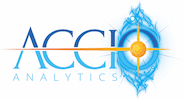How to move to modern systems while managaging risk – Implementation Guide
Accio Analytics Inc.
17 min read
Modernizing legacy systems is no longer optional for asset management firms. With growing client demands, stricter regulations, and volatile markets, outdated systems can hinder decision-making, delay compliance, and risk losing clients. This guide outlines a clear, risk-managed approach to upgrading financial systems while ensuring smooth transitions and measurable outcomes.
Key Steps to Modernization:
- Assess Current Systems: Identify inefficiencies, integration challenges, and compliance gaps.
- Set Goals Aligned with Business Plans: Define measurable objectives like reducing reporting times or scaling for growth.
- Develop a Risk-Focused Plan: Address operational, compliance, and financial risks with clear mitigation strategies.
- Choose Modern Solutions: Opt for modular platforms with API-driven integration for flexibility and scalability.
- Ensure Data Governance and Compliance: Establish strong data management practices and automate regulatory reporting.
- Measure and Scale: Track KPIs like efficiency, compliance accuracy, and ROI to guide future growth.
By following this structured process, firms can modernize without unnecessary disruptions, ensuring faster decision-making, improved compliance, and better client service.
Step 1: Review Current Systems and Set Clear Goals
Before diving into modernization, it’s crucial to understand your existing systems and establish clear objectives. This step sets the stage for success, ensuring your efforts address real challenges rather than becoming a costly misstep that fails to deliver meaningful results.
Take a close look at not just your software and hardware but also how these systems interact. Identify areas where breakdowns or inefficiencies are slowing operations. Without this clarity, even the most advanced system upgrades may fail to solve the issues that matter most. This review ensures your technology upgrades align with your company’s broader business goals.
Complete System Review Process
Start by mapping out your entire technology ecosystem, including back-end systems and integrations. Catalog every system that handles financial data – portfolio management platforms, compliance reporting tools, risk management systems, and client portals. Don’t forget to include how these systems connect, whether through automated integrations, manual data transfers, or batch file uploads.
Conduct a data flow analysis to uncover critical pain points. Track how information moves, from market data entry to client reporting, and measure delays. Many firms discover that processes expected to run in real-time are slowed by manual handoffs or outdated system limitations, turning hours into days.
Integration challenges often emerge as major obstacles. Legacy systems may rely on custom middleware or manual interventions to share data, creating bottlenecks and increasing the risk of errors. Document manual processes, spreadsheet-based calculations, and email approvals to identify opportunities for automation and efficiency gains.
Pinpoint performance bottlenecks during peak usage times. Test your systems under heavy loads and note where slowdowns, crashes, or manual workarounds occur. These stress points will help you prioritize which systems need immediate upgrades versus those that can wait for later phases.
Don’t forget to evaluate compliance gaps in your current setup. Review audit findings, regulatory feedback, and internal compliance reports to identify areas where your systems fall short in meeting reporting requirements or maintaining audit trails. These gaps often become key drivers for modernization projects, especially when they pose risks to regulatory adherence.
Match Modernization Goals with Business Plans
Your modernization efforts should directly support your company’s strategic goals. Align your technology objectives with leadership’s vision for the next three to five years. Are you planning to expand into new markets, launch innovative investment strategies, or significantly increase assets under management?
Set measurable efficiency targets. For instance, aim to reduce the monthly reporting cycle from five days to one or cut manual data reconciliation by 80%. These concrete goals allow you to evaluate potential solutions and measure success after implementation.
Often, revenue growth becomes a key motivator for modernization. Calculate how faster decision-making, improved client service, or the ability to launch new products could impact your bottom line. For example, if real-time portfolio analytics enable your investment team to seize opportunities a day earlier, estimate the potential value of those faster decisions across your portfolio.
Risk reduction is another critical factor. Quantify the cost of potential regulatory fines, system downtime, or client attrition due to poor service quality. These risk-focused calculations often provide a compelling case for modernization, especially when they highlight operational and compliance benefits.
Consider scalability when planning for growth. Design systems that can handle expansion – whether that’s increasing assets from $2 billion to $5 billion or managing more complex reporting requirements and regulatory obligations. Ensure your systems can accommodate rising data volumes, additional users, and evolving business needs without requiring frequent overhauls.
To prioritize effectively, create a prioritization matrix that evaluates potential improvements based on their business impact and implementation complexity. Focus first on high-impact changes that are relatively easy to implement, saving more complex transformations for later phases. This approach allows you to achieve early wins while building momentum for larger changes.
Finally, establish realistic timelines that account for the complexities of financial services modernization. Regulatory requirements, data migration, and rigorous testing typically extend implementation schedules beyond initial expectations. A phased approach – delivering incremental improvements – can help you show progress while reducing risks associated with large-scale overhauls.
Step 2: Create a Risk-Focused Modernization Plan
After reviewing your systems and setting goals, it’s time to turn those insights into a clear roadmap that reduces risks while pushing your modernization efforts forward. With a solid understanding of the risks involved, the next step is to address and minimize each one.
Find and Reduce Major Risks
Start by sorting risks into three main categories: operational (like downtime, data loss, or workflow interruptions), compliance (such as reporting errors or audit gaps), and financial (including cost overruns or potential revenue losses). Among these, data migration and integration often pose the greatest challenges. To tackle this, create thorough inventories of your critical datasets, their formats, and transformation requirements. Map out system dependencies and any third-party connections to avoid surprises during implementation.
Regulatory compliance is another area where there’s no room for error. Review your current reporting obligations and stay ahead of any upcoming changes that might impact your timeline. Also, don’t overlook user adoption – if your team isn’t ready, even the best systems can fall short. Plan for comprehensive training and enlist department champions to help their peers adapt.
To prepare for potential setbacks, develop contingency plans for major risks. These might include running parallel systems during transitions, having rollback procedures in place, and setting up clear escalation protocols to address issues quickly and effectively.
Set Up a Management Framework
With risks identified, it’s essential to establish a governance structure to manage both mitigation and implementation. Form a cross-functional steering committee that includes representatives from IT, compliance, operations, and senior leadership. Support this group with a C-suite executive sponsor who has the authority to make decisions and allocate budgets as needed.
Define responsibilities and decision-making processes using RACI matrices, ensuring clarity around who is responsible, accountable, consulted, and informed for each task. Keep everyone aligned with regular updates: weekly tactical reports for immediate concerns and monthly strategic reviews for overall progress. Set clear thresholds for escalating risks so small issues don’t snowball into larger problems.
Gradual Implementation for Controlled Change
Instead of overhauling everything at once, roll out changes in phases. Begin with non-critical systems as pilot programs to test your approach. Run new systems alongside legacy ones to ensure accuracy and maintain compatibility, giving you a fallback option if anything goes wrong.
For example, a financial market utility partnered with Slalom in 2017 to modernize its legacy infrastructure. They created a clear vision and a multiyear roadmap, leveraging advanced cloud-based tools while meeting strict regulatory requirements. This phased approach allowed them to modernize gradually without disrupting operations [1].
Focus on achieving quick wins within the first 60 to 90 days to build momentum and demonstrate immediate benefits. Conduct rigorous testing with real data, simulating stress and failure scenarios to ensure reliability. For each phase, have tested rollback procedures in place with clear criteria for when they should be activated. This way, you can confidently reverse changes if necessary, minimizing risks and maintaining control throughout the process.
Step 3: Choose and Implement Modern Solutions
Now that your risk management framework is in place, it’s time to pick the right technology to fuel your modernization efforts. The goal here is to adopt modern solutions that not only align with your infrastructure but also deliver measurable improvements in performance and decision-making. Integration should be smooth, ensuring minimal disruption to existing systems.
How to Evaluate Modern Platforms
When assessing modern financial platforms, focus on modular architecture. Unlike older, monolithic systems that demand complete replacements, modular platforms – like Accio Quantum Core – let you implement specific features based on your current needs. This approach minimizes risk and protects your existing tech investments.
Prioritize platforms with API-driven integration capabilities. These allow you to roll out additonal components gradually, avoiding major disruptions to your workflows. Incremental integration also gives you the flexibility to test and validate each piece before scaling it across your organization.
Another critical factor is data accuracy and integrity. Choose platforms that include built-in validation and traceability features, ensuring transparency throughout the data lifecycle. This is not just a best practice but also a necessity for meeting regulatory compliance and audit standards.
Finally, opt for platforms that are designed to scale with your data needs and support real-time compliance monitoring. By enabling components to operate concurrently, these platforms maintain consistent performance even as your analytical demands grow. This approach avoids performance bottlenecks, reduces the frequency of costly upgrades, and minimizes manual compliance reporting efforts – all while lowering the risk of violations.
Once you’ve established your evaluation criteria, the next step is to focus on strategies for integrating these modern solutions into your operations.
Best Methods for Smooth Integration
After selecting the right platform, start with API-based integration to connect new systems with your existing infrastructure. This method ensures that your current operations remain unaffected. Begin by mapping critical data flows and identifying straightforward integration points for quick, tangible results.
Use parallel processing to validate data integrity during the transition. Run the new systems alongside your legacy ones to ensure consistency and reliability. This approach allows you to maintain your existing operations as a safety net while building trust in the new platform.
Training is crucial. Organize hands-on sessions for your team and appoint department champions who can guide their colleagues through the transition. These champions act as on-the-ground resources, helping teams adapt to new workflows and answering questions as they arise.
Establish a feedback loop between the implementation teams and end users. Regular discussions help catch issues early, ensuring the new systems align with real-world operational needs rather than theoretical goals.
Adopt an incremental deployment strategy instead of replacing systems all at once. Start with non-critical functions to test the waters, then gradually expand to core operations as your team gains confidence and expertise.
Modular vs. Monolithic Systems Comparison
| Factor | Modular Systems (e.g., Accio Quantum Core) | Monolithic Systems |
|---|---|---|
| Integration Effort | Low – API-driven, incremental deployment | High – requires complete system overhaul |
| Implementation Risk | Minimal – test individual components | Significant – all-or-nothing approach |
| Scalability | Excellent – parallel processing, targeted scaling | Limited – entire system must be upgraded |
| Cost Structure | Flexible – pay for components you need | Fixed – high upfront investment required |
| Customization | High – adapt specific agents to your needs | Low – limited configuration options |
| Maintenance | Efficient – update individual components | Complex – system-wide updates required |
| Time to Value | Fast – quick wins with targeted deployment | Slow – benefits realized only after full implementation |
This table highlights why modular systems are ideal for organizations looking to modernize with minimal risk. Modular platforms allow you to implement specific features – like real-time holdings calculations or advanced risk analytics – without overhauling your entire tech stack. This targeted approach not only delivers results quickly but also builds confidence within your organization.
When deploying modular solutions, focus on addressing your most pressing challenges first. For instance, if real-time performance attribution is a priority, start by implementing returns and analytics agents. This strategy ensures early wins, helping to build momentum as you work toward broader modernization goals.
sbb-itb-a3bba55
Step 4: Build Data Management and Ensure Compliance
Once modern solutions are in place, the next step is to establish a strong data management framework. This not only safeguards your organization against costly compliance violations but also ensures you can fully utilize your updated systems. Effective data governance lays the groundwork for leveraging advanced analytics to manage risks proactively.
Create a Data Management Framework
Start by setting clear data quality standards. Define and enforce validation rules for all incoming data from any source, and automate these checks to catch inconsistencies early – before they disrupt reporting or compliance efforts.
Develop a centralized data dictionary that tracks data lineage. This should document data elements, their sources, transformation rules, and definitions, creating a single source of truth for your organization.
Implement data retention policies that comply with regulatory guidelines while keeping storage costs in check. Automate processes like archiving and deletion to ensure these policies are consistently applied. Monitor data quality regularly with automated reports that track metrics like accuracy, completeness, and timeliness. Set up alerts to flag issues and trigger corrective actions promptly. This solid data management foundation directly supports the compliance and risk monitoring systems outlined below.
Maintain Ongoing Regulatory Compliance
Regulatory compliance in asset management requires constant vigilance. Modern systems can automate much of this oversight, minimizing the risk of violations and freeing your compliance team to focus on strategic priorities.
Use real-time compliance tools to flag issues such as portfolio concentration breaches as they happen. Automated audit trails and standardized reporting templates ensure precise, traceable, real-time compliance. Tools like the Global Settings Agent in Accio Quantum Core help maintain centralized control over critical parameters, improving overall consistency.
Regularly test your compliance framework using simulated scenarios. This proactive approach helps uncover vulnerabilities before they lead to violations. It also ensures you have well-documented testing results and remediation actions ready for regulatory reviews.
Use Predictive Analytics for Risk Monitoring
With structured data and automated compliance systems in place, predictive analytics can take your risk management to the next level. Using advanced statistical methods and machine learning, you can anticipate risks and address them before they become problems.
Predictive models excel at uncovering hidden correlations and risk patterns in large datasets, offering deeper insights into compliance risks. For example, these models can identify trends that have historically led to compliance breaches.
Set up early warning systems powered by predictive analytics to forecast potential compliance issues. By analyzing historical and operational data, these systems enable preemptive action. Real-time risk scoring can continuously assess your exposure across market, operational, and compliance dimensions. Automated alerts can notify you when risk scores cross predefined thresholds, allowing for immediate intervention.
Use predictive analytics to prioritize resources for risk mitigation. By identifying which risks are most likely to occur and their potential impact, you can allocate resources more effectively. Additionally, establish a continuous improvement process where predictive insights refine your compliance strategies over time. As models learn from new data and outcomes, regular validation ensures they remain effective in adapting to changing market conditions and regulations.
This integrated approach not only reduces risks but also strengthens your long-term strategy for modernizing and safeguarding asset management operations.
Step 5: Measure Results and Scale for Future Growth
After establishing solid data governance and risk management practices, the next critical step is to evaluate outcomes and prepare for growth. To make sure your modernization efforts pay off, it’s important to measure results and plan for future expansion. By leveraging modern tools and data governance framework, you can analyze operational and financial outcomes to guide your next steps.
Set and Track Key Performance Indicators
To measure success effectively, focus on metrics tied to tangible business outcomes. These indicators should highlight both immediate improvements and long-term value.
- Operational efficiency metrics: These reveal productivity gains. Keep an eye on processing times for key workflows like trade settlement, portfolio reconciliation, and regulatory reporting. System uptime and response times are also crucial to ensure your infrastructure is performing as expected. For perspective, Couchbase managed to double its ARR in two years without adding extra collections resources [2].
- Compliance and risk indicators: Use these to assess how well your updated systems mitigate regulatory risks. Track compliance incidents, resolution times for audit findings, and the accuracy of regulatory submissions. Monitoring risk exposure and the speed at which potential issues are flagged can reduce penalties and boost stakeholder trust.
- Financial performance measures: These demonstrate the ROI of modernization. Look at cost savings from automation, reduced manual work, and streamlined systems. For example, WP Engine cut its dunning time by 90% [2], and Currencycloud increased its cash collections by 60% in just six months without expanding its team [2].
- Data quality and accessibility metrics: These ensure your modern systems improve decision-making. Track data accuracy, the time it takes for data to become available for analysis, and how widely new tools are adopted. Evaluate whether teams can access critical information faster than they could with legacy systems.
Start by establishing baseline metrics before rolling out the new systems. Review progress monthly during the first year, then shift to quarterly evaluations. Real-time dashboards can help you monitor these metrics and make quick adjustments when necessary.
Once you have clear performance metrics in place, the focus shifts to scaling operations effectively.
Methods for Scaling and Continuous Improvement
Scaling successfully involves both technical readiness and organizational flexibility. Your systems need to handle growing data demands and adapt to evolving business requirements without losing efficiency.
- Technical scalability: This starts with the architecture you chose during implementation. Modern systems should support real-time updates and predictive analytics instead of just reactive reporting [2]. Integration is also key – connecting systems like accounts receivable, accounts payable, and treasury functions creates a unified platform [2]. Lithic is a great example of scaling through technical innovation. After realizing legacy processors didn’t meet their needs, Lithic built a scalable, API-driven platform. This move allowed them to double their Total Processing Volume (TPV) twice in two years, growing from $250 million in July 2022 to $1 billion by November 2024 [4].
- Organizational scaling: Building strong partnerships and fostering the right culture are essential for growth. Early alliances can amplify network effects and integrate financial services into broader customer-focused platforms [3]. As the industry shifts toward unified "one-stop shop" solutions, these partnerships become even more valuable [3]. Internally, prioritize transparency, decisiveness, and empowerment. Stay closely connected to customers to understand their needs, and ensure your systems can adapt accordingly [4]. Investing in employee expertise is equally important, as their focus on customer success and operational excellence will drive milestones [4].
- Continuous improvement processes: To keep pace with changing markets, modernized systems must evolve. Intelligent automation can handle increasing workloads without requiring a larger workforce [2]. Predictive analytics can refine your scaling strategies and optimize resources [2]. Revisit your data strategies to balance sharing with partners while safeguarding proprietary information – a critical step in today’s increasingly interconnected economy [3]. Companies that align with a human-centered approach and demonstrate positive social impact are better positioned to attract talent, secure funding, and sustain growth [3]. Exploring vertical specialization in emerging industries may also open new growth opportunities [4].
Regular quarterly reviews ensure your systems remain aligned with current objectives and help you identify areas for improvement. This proactive approach guarantees that your modernization efforts continue to deliver value as your business expands and market conditions shift.
Conclusion: Balance Innovation with Risk for Long-Term Success
Modernizing legacy financial systems isn’t just about jumping on the latest tech trends – it’s about finding the right balance between innovation and risk management. The five-step framework discussed here equips C-suite leaders with practical tools to achieve measurable outcomes while minimizing operational disruptions.
The stakes are high, and the numbers speak volumes. For instance, 74% of companies fail to complete their legacy system modernization efforts[6]. Meanwhile, 50% of CIOs report spending 60% of their time managing outdated software[6], and 66% of enterprise software projects blow past their budgets due to poor planning and insufficient risk management[5].
But challenges like these can be turned into opportunities. Take the example of a leading US bank that transformed its legacy portfolio accounting system in 2024. By leveraging cross-functional teams and modern analytics, they achieved a 28% boost in operational efficiency and a 40% reduction in compliance audit times – all within six months[5]. Their success highlights the importance of blending technological advancements with strong risk controls.
Modernization isn’t a one-and-done deal – it’s an ongoing strategic effort. Regular system reviews, aligning tech goals with business strategies, rolling out changes in phases, and continuously tracking results are all essential steps. These practices help asset management firms tackle digital transformation without sacrificing operational stability.
When implemented thoughtfully, modern technologies can enhance efficiency, strengthen security, and improve customer experiences. However, disciplined execution is critical to ensure system compatibility and meet regulatory requirements. By keeping a clear focus on both innovation and risk, organizations can confidently navigate the path forward.
FAQs
What are the key risks of modernizing legacy financial systems, and how can they be managed effectively?
Modernizing legacy financial systems isn’t without its hurdles. Common challenges include data loss, integration difficulties, and system downtime – all of which can disrupt operations and hit revenue hard. On top of that, older systems often grapple with compliance gaps, security weaknesses, and high operational expenses, which can lead to legal troubles or damage a company’s reputation.
To navigate these risks, companies should take proactive steps. Start with a thorough risk assessment to identify potential pitfalls. Implement phased migration plans to minimize disruptions, and establish strong data governance protocols to safeguard critical information. Adopting modern security frameworks, like zero-trust architectures, can also strengthen defenses against breaches while ensuring compliance. These strategies can help organizations modernize their systems while keeping risks in check.
How can asset management firms modernize their systems while ensuring alignment with business goals and measurable success?
To modernize systems effectively, asset management firms need to begin by setting clear, measurable goals that align closely with their overall business strategy. Applying frameworks like SMART (Specific, Measurable, Achievable, Relevant, Time-bound) can help create a structured approach, ensuring every objective is well-defined and actionable.
It’s important to focus on initiatives that offer the largest impact on growth and efficiency. Establishing key performance indicators (KPIs) is essential for tracking progress. By regularly reviewing these KPIs and tying them to team-specific objectives, firms can encourage accountability and stay on track to achieve meaningful results.
Incorporating modern tools and strong data governance systems, can simplify processes and minimize risks. These technologies not only make the transition to updated systems smoother but also help maintain compliance and operational reliability.
Related Blog Posts
Additional Insights
View All Insights




